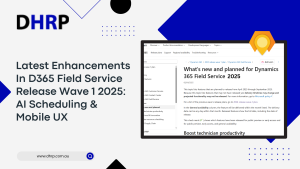Microsoft Azure has become the most significant tool for businesses as it is now one of the leading cloud platforms. It offers an extensive range of services along with great features for scaling business as per modern customer needs.
Besides, as the technology continues to advance, you must stay updated about Microsoft Azure’s latest trends for the next year and the future. Through this article, we will delve into the future Azure trends and help you understand the potential insights that lie ahead for the robust cloud platform.

Who uses Microsoft Azure ?
Due to the accessibility and vast scalability of Azure. It can be used by businesses of all sizes and circumstances, from garage startups to Fortune 500 corporations; in fact, 90% of Fortune 500 trust Microsoft to conduct processes.
In addition to a diverse range of innovative and mission-critical services, Azure offers many other advantages that make it desirable to businesses of all sizes.
Azure is adaptable; users can add new services, increase storage capacity, and develop new apps as they go without worrying about whether they have the infrastructure to handle the changes.
Azure can save businesses a lot of money because it eliminates the need for expensive hardware like servers, routers, and load balancers, as well as the in-house IT manpower to maintain them. Many Microsoft Azure services are pay-as-you-go, and customers may get a real-time view of their spending through their admin interface, making IT budgeting much easier and more precise.
The dependability of Microsoft’s Azure cloud services is also advantageous to enterprises. Azure’s 99.99% uptime guarantee, extensive disaster recovery plans, and comprehensive backup systems ensure that enterprises, their processes, and their data are in good hands.
Future Scope of Azure and its Trends 2024
Here are the top Azure trends to watch out for and get ready for business advancements.
Microsoft is making a significant effort to integrate CoPilot with virtually every Microsoft software. Microsoft 365 Copilot integrates generative AI (genAI) into Microsoft 365 applications like Word, PowerPoint, Excel, Outlook, and Teams. It enables businesses to use natural language to request that Copilot undertake things on their behalf.
Furthermore, Forrester expects that Microsoft 365 Copilot will reach 6.9 million knowledge workers in the United States by 2024. The research group goes on to estimate that the solution will pay for itself even with rather conservative assumptions.
Azure, Microsoft’s cloud computing platform, offers a variety of AI and machine learning tools and services to help businesses solve difficult problems and make better-informed decisions.
Using Azure Cognitive Services’ pre-built APIs and SDKs, developers can incorporate computer vision, speech recognition, natural language processing, and other AI capabilities into their products.
Overall, Azure’s AI and machine learning capabilities provide businesses with the resources they need to transform their data into smart understandings and make sound decisions.
Enterprises are developing and managing Internet of Things (IoT) solutions with the Azure IoT suite of tools and services. It enables businesses to connect, control, and monitor their IoT devices.
Azure IoT Central is a fully managed SaaS platform, making it easy to design and maintain IoT applications. It provides pre-built templates and workflows for a variety of IoT use cases.
By extending Azure IoT capabilities to the network’s edge, a service called Azure IoT Edge enables organizations to manage and analyze IoT data locally, reduce latency, and slash bandwidth costs.
The integration with Azure Open AI and Copilot will be another significant driver for Microsoft Fabric adoption in 2024. There are adoption accelerators with Fabric offering Copilot around Data Science, Data Factory, and Power BI, but the Fabric goal is to empower every business user with a CoPilot experience through Power BI and Microsoft 365, enabling them to get the most value from their organizational data within Fabric.
We observed a significant increase in the number of customers seeking to talk about their Azure Spend and have a better understanding of where their money is going and how they can ensure they are getting good value for money by the end of 2023.
This comes as no surprise; various studies have found that customers might waste up to 30% of their cloud spending. Customers have been rapidly adopting Azure, making it difficult for governance teams to keep up with what has been supplied, let alone validate whether the company is getting value for money.
However, we believe that this will be a more prominent subject in 2024. Customers have provided excellent solutions that have enabled their users to perform the tasks required by the organization. Many solutions will be reassessed in 2024 to ensure the long-term viability of the solution that was adopted.
Azure is the only hybrid cloud option that provides a consistent experience. It provides a strong, multi-layered security structure and has the most comprehensive compliance offerings among cloud providers.
Many enterprises will be migrating away from typical hybrid cloud architectures and toward a more flexible cloud approach by 2024. By combining fragmented teams, geographically dispersed locations, and vast systems into a unified operational, security, application, and data architecture within Azure, this new strategy enables enterprises to flourish in fast-changing settings.
Microsoft Azure has made significant security changes to provide clients with a secure cloud environment. One of the most recent security capabilities is Azure Future in Security Centre, which provides unified security management and threat protection across hybrid cloud workloads.
Microsoft Azure active directory is a solution that supports the identification, analysis, and response to security threats. Azure also offers data encryption, network security, and compliance certifications to help businesses meet their security and compliance needs.
Bottom Line
Microsoft Cloud Azure’s future is bright, with intriguing trends and projections on the horizon. The increasing acceptance of hybrid cloud will shape the Azure ecosystem, AI and ML developments, edge computing, and the spread of containerization.
Moreover, the expansion of serverless computing, IoT capabilities, increased security measures, and copilot integration breakthroughs will reinforce Azure’s position as a leading cloud platform.
As for now, if you need smooth Azure integration services, DHRP consultants have got your back. Let’s discuss your business needs to prepare for this year now!





































































































